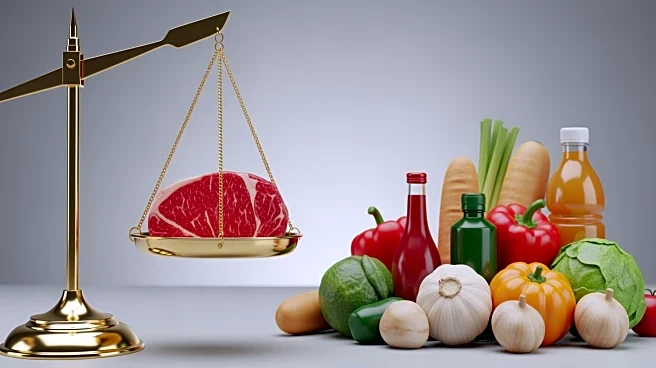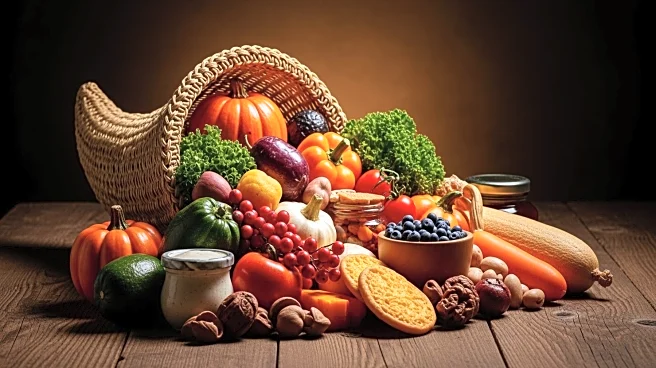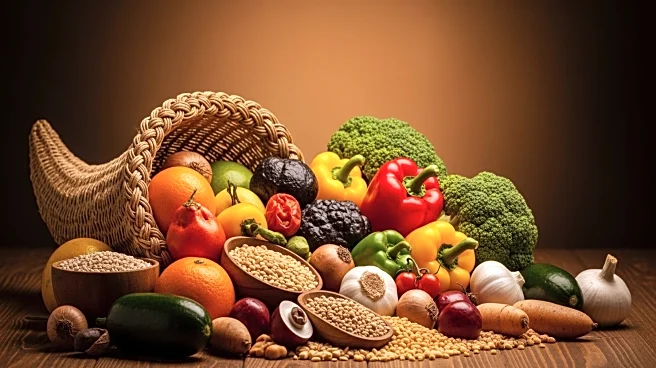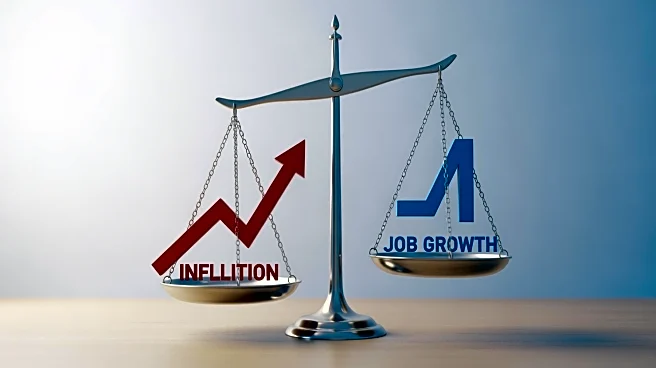What's Happening?
President Trump has repeatedly claimed that beef is the only grocery product experiencing price increases during his second term. However, data from the Consumer Price Index contradicts this assertion, showing that grocery prices have risen overall. Between
January and September, average grocery prices increased by 1.4%, with significant hikes in various categories such as meats, poultry, fish, and eggs (up 4.5%), nonalcoholic beverages (up 2.8%), and cereals and bakery products (up 1.4%). Only dairy products saw a slight decline of 0.2%. Experts attribute these increases to tariffs on imported goods and a crackdown on undocumented immigrants, impacting the farm workforce.
Why It's Important?
The rise in grocery prices has significant implications for American consumers, particularly those with limited budgets. The increase in tariffs on imported goods, including food items, has contributed to higher costs, affecting everyday grocery shopping. This situation challenges President Trump's claims and highlights the broader economic impact of his policies. Consumers may face increased financial strain, and businesses involved in food production and distribution could experience shifts in demand and pricing strategies.
What's Next?
As grocery prices continue to rise, stakeholders such as policymakers, consumer advocacy groups, and industry leaders may seek solutions to mitigate the impact on consumers. Potential actions could include revisiting tariff policies, addressing workforce challenges in agriculture, and exploring ways to stabilize food prices. The administration may face pressure to address these economic concerns, particularly as they affect the cost of living for American families.
Beyond the Headlines
The broader implications of rising grocery prices extend to discussions on trade policies and immigration reform. The economic strategies employed by the administration, including tariffs and workforce management, may prompt debates on their effectiveness and long-term sustainability. Additionally, the impact on consumer behavior and market dynamics could lead to shifts in purchasing patterns and demand for alternative food sources.














